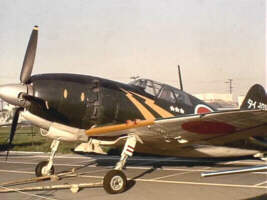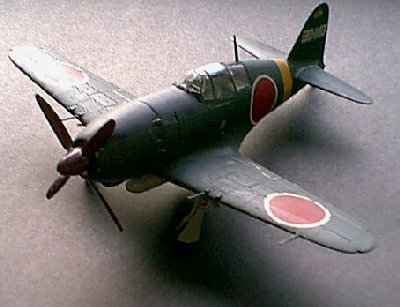





|
|
|
|
|
|
|
|
| Mitsubishi J2M3 "Raiden"/"Jack" 303 fighter group | Hasegawa |
|
|
|
|
The J2M Raiden ("Thunderbolt") was designed as the Zero came into production, making the opposite sacrifices as the Zero. Instead of sacrificing everything for the sake of range and maneuverability, it gave up some range for a phenominal climb rate, great maneuverability, and heavy armament. It was designed from the outset as an interceptor - and if it weren't for the delays in production, it could have given the late generation WWII American fighters (such as the Bearcat and the later Corsairs) a serious challenge. It was one of the few Japanese fighters that could successfully get high enough to intercept the B-29 Superfortresses.
The kit is much of what I've come to expect from Hasegawa. It has finely moulded panel lines, accurate parts, and a good fit. No filler or sanding was needed anywhere on the kit.
One thing to note, though - for such a small model (even compared to other WWII 1/48 fighters) it has a large canopy. Take extra care in the cockpit - any time spent detailing *will* show. Not much would need to be added - Hasegawa did a good job detailing the cockpit, with actual recessed instruments instead of a decal. A little drybrushing will go a long way.
The only weak spot in the instructions deals with the side-projecting "cannon" (much like the "Schrage Musik" but coming out the side of the aircraft, not the top.) Hasegawa doesn't give very clear details as to how this should be mounted - point it out and up at a slight angle. I still haven't found good info for this.
You can finish the kit as one of two aircraft, the only differences are the markings. The decals snuggle down onto the surface with little to no coaxing. They're cooperative, and opaque enough that the background (dark green) doesn't show through.
All in all, this builds up into a fine (but small) model, showing
(yet again) why serious modeller's standards have gotten so high recently.
.